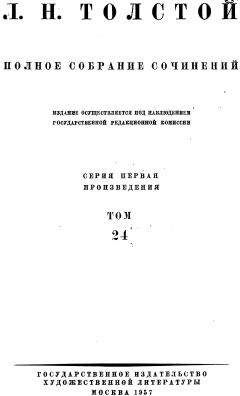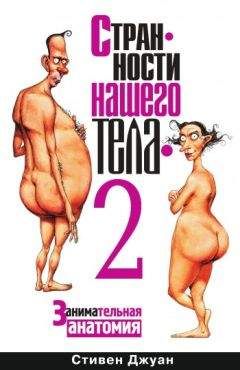508
M. Foster, ‘The boob-onic plague’, Weekly World News, 26 August 2002, pp. 42–43.
K. Campbell and M. Lakie, Aaaaaah?’, New Scientist, 15 March 1997, p. 65.
S. Juan, A blow for babe magnets’, National Post, 17 April 2006, p. 1.
Dr Michael Onken is from the Department of Anatomy at Washington University in St Louis.
Personal communication, 30 March 2006.
S.Juan, A blow for babe magnets’, National Post, 17 April 2006, p. 1.
Stephen Turner is an engineer with the American Society of Heating, Refrigerating and Air-Conditioning Engineers (ASHRAE) in Atlanta, Georgia.
Personal communication, 23 August 2006.
Personal communication, 24 August 2006.
S. Juan, ‘Why do some people feel the cold more than others?’, The Register, 8 September 2006.
S. Juan, ‘Great moments in human research’, The Register, 27 January 2007.
S. Juan, ‘Great moments in human research’, The Register, 3 February 2007.
Drs J. M. Draus, S. Huss, N. Harty, W. Cheadle and G. Larson are from the Department of Surgery at the School of Medicine at the University of Louisville, Kentucky.
J. Draus et al., ‘Enterocutaneous fistula: Are treatments improving?’, Surgery, 2006, vol. 140, no. 4, pp. 570–578.
S. Juan, “What is a fi stula?’, The Register, 27 October 2006.
S. Juan, ‘Does alcohol really keep you warm’, The Register, 27 October 2006.
Dr Gerhard Gmel is from the Alcohol Treatment Centre at Lausanne University Hospital, Switzerland, and Dr Jurgen Rehm is from the Department of Public Health Sciences at the University of Toronto, Canada.
G. Gmel and J. Rehm, ‘Harmful alcohol use’, Alcohol Research and Health, 2003, vol. 27, no. 1, pp. 52–62.
S. Juan, ‘Three orders of the mind’, Epoch Times, 20 December 2006, p. 9.
R. Campbell, Campbell’s Psychiatric Dictionary, Oxford University Press, New York, 2004, pp. 538–539, 541.
S. Juan, ‘Keeping your psychos straight’, National Post, 15 May 2006, pp. 1–2.
Dr John Gartner is a clinical psychologist at Johns Hopkins University School of Medicine.
J. Gartner, ‘Dark Minds’, Psychology Today, September-October 2009, pp. 37–38.
Dr Patrick Leman is from the Royal Holloway College of the University of London.
British Psychological Society, Who shot the president? London, 18 March 2003.
P. Leman, ‘The born conspiracy’, New Scientist, 14 July 2007, pp. 35–37.
Dr Robert Burns was formerly the Director of the Institute for Human Development at the University of Seattle, Washington.
M. Taylor, “Why we doodle’, In Health, March-April 1991, pp. 30–33.
M. Taylor, “Why we doodle’, In Health, March-April 1991, pp. 30–33.
M. Taylor, “Why we doodle’, In Health, March-April 1991, pp. 30–33.
British Broadcasting Commission, ‘”Blair” doodles amuse Number 10’, BBC News (London), 30 January 2005.
‘Sifting through the mystery of JFK’s doodles’, Associated Press (New York), 23 November 2004.
N. Nelson, The Doodle Dictionary, Doubleday, New York, 1992.
S. Juan, “Why do we doodle?’, The Register, 13 October 2006.
E. Dykeman, ‘Doodling as a memory boost’, Elder Care Express Newsletter (East Lansing, Michigan), 5 March 2009.
Dr Jackie Andrade is from the School of Psychology at the University of Plymouth in the UK.
J. Andrade, “What does doodling do?’, Applied Cognitive Psychology, 2009, vol. 23, no. 2, Epub 27 February 2009.
I. Sample, ‘Doodling should be encouraged in boring meetings, claims psychologist’, The Guardian (London), 27 February 2009, p. 15.
Dr Peter Quintieri is from the School of Medicine at Duke University in Durham, North Carolina, and Dr Kenneth Weiss is from the University of Medicine and Dentistry of New Jersey.
P. Quintieri and K. Weiss, ‘Admissibility of false-confession testimony: Know thy standard’, Journal of the American Academy of Psychiatry and the Law, 2005, vol. 33, no. 4, pp. 535–538.
Drs S.M. Kassin, C. Meissner and R. Norwick are from the Department of Psychology at Williams College in Williamstown, Massachusetts.
S. Kassin et al., “I’d know a false confession if I saw one”: A comparative study of college students and police investigators’, Law and Human Behaviour, 2005, vol. 29, no. 2, pp. 211–227.
S. Juan, ‘What is a Confessing Sam?’, The Register, 1 September 2006.
J. Leckenby, Claims About the Power of Subliminal Advertising, Center for Interactive Advertising, University of Texas, Austin, 6 March 2006.
Drs Susan Crawley, C. French and S. Yesson are from the Department of Psychology at Goldsmith College of the University of London.
S. Crawley et al., ‘Evidence for transliminality from a subliminal card-guessing task’, Perception, 2002, vol. 31, pp. 887—92.
S. Juan, ‘Hidden messages and ESP’, National Post, 27 March 2006, p. 1.
P. Marks, ‘The lie-detector you’ll never know is there’, New Scientist, 7 January 2006, p. 22.
S. Juan, ‘Do lie detector tests really work?’, The Register, 16 June 2006.
S. Juan, ‘It would be a lie to say that it’s a lie-detector’, National Post, 6 November 2006, p. 1.
M. Huelsman et al., ‘Relation of religiosity with academic dishonesty in a sample of college students’, Psychological Reports, 2006, vol. 99, no. 3, pp. 739—42.
Drs M.K Johnson, S. Hashtroudi and D.S. Lindsay are from the Department of Psychology at Princeton University, New Jersey.
M. Johnson et al., ‘Source monitoring’, Psychological Bulletin, 1993, vol. 114, no. 1, pp. 3—28
Drs S. A. Perkins and E. Turiel are from the Department of Psychology at the University of California at Berkeley.
S. Perkins and E. Turiel, ‘To lie or not to lie: To whom and under what circumstances’, Child Development, 2007, vol. 78, no. 2, pp. 609—21.
S. Juan, ‘How honest are humans’, National Post, 17 April 2007, pp. 1–2.
R. Comer and J– Laird, ‘Choosing to suffer as a consequence of expecting to suff er: Why do people do it?’, Journal of Personality and Social Psychology, 1975, vol. 32, no. 1, pp. 92—101.
Drs Rebecca Curtis, Paul Smith and Robert Moore are from the Department of Psychology at Adelphi University in New York.
R. Curtis et al. ‘Suff ering to improve outcomes determined by both chance and skill’, Journal of Social and Clinical Psychology, 1984, vol. 2, no. 2, pp. 165–173.
Drs Roy Baumeister, Jean Twenge and Christopher Nuss are from the Department of Psychology at Case Western Reserve University in Cleveland.
R. Baumeister et al., ‘Effects of social exclusion on cognitive processes: Anticipated aloneness reduces intelligent thought’, Journal of Personality and Social Psychology, 2002, vol. 83, no. 4, pp. 817–827.
Drs T.B. Kashdan, J. Elhai and B. Frueh are from the Department of Psychology at George Mason University in Virginia.
T. Kashdan et al., Anhedonia and emotional numbing in combat veterans with PTSD’, Behaviour Research and Therapy, 2006, vol. 44, no. 3, pp. 457–467.
R. Campbell, Campbell’s Psychiatric Dictionary, Oxford University Press, New York, 2004, p. 40.
Dr Ayala Malach-Pines is a psychologist at Ben-Gurion University in Beersheba, Israel.
A. Malach-Pines, Romantic Jealousy: Causes, Symptoms, Cures, Routledge, London, 1998, p. 102.
Dr Salman Akhtar is from the Jeff erson Medical College in Philadelphia.
S. Akhtar, ‘Forgiveness: Origins, dynamics, psychopathology, and technical relevance”, Psychoanalytic Quarterly, 2002, vol. 71, no. 2, pp. 175—12.
Dr David Lotto is from the University of Massachusetts School of Medicine in Boston.
D. Lotto, ‘The psychohistory of vengeance’, Journal of Psychohistory, 2006, vol. 34, no. 1, pp. 43–59.
Dr Anthony N. G. Clark is a psychologist from Brighton in the UK.
Personal communication, 4 March 2005.
S. Juan, ‘What cultures don’t share Western economic values?’, The Register, 16 June 2006.
Dr W. E. Addison is from the Department of Psychology at Eastern Illinois University in Charleston.
W. Addison, ‘Beardedness as a factor in perceived masculinity’, Perceptual and Motor Skills, 1989, vol. 68, pp. 921–922.
Drs Michael Shannon and C. Patrick Stark are from the Department of Psychology at Western State College in Gunnison, Colorado.
M. Shannon and C. Stark, ‘The infl uence of physical appearance on personnel selection’, Social Behaviour and Personality, 2003, vol. 31, no. 6, pp. 613–623.
Drs A. A. de Souza, V. B. Baiao and E. Otta are from the Department of Experimental Psychology at the University of Sao Paulo in Brazil.
A. de Souza et al., ‘Perception of men’s personal qualities and prospect of employment as a function of facial hair’, Psychological Reports, 2003, vol. 92, no. 1, pp. 201—08.
S. Juan, Aching heads’, New York Daily News, 10 May 2005, ‘The Odd Body”, pp. 1–2.
Dr Roy Baumeister, J. Twenge and K. Catanese are from the Case Western Reserve University, Ohio.
J. Briggs, ‘I.Q. bruised as ego battered’, Psychology Today, August 2002, p. 42.
S. Juan, ‘Women warmer at the core’, National Post, 6 February 2006, pp. 1–2.
Drs O. Egger and M. Rauterberg are from the Swiss Federal Institute of Technology in Lausanne, Switzerland.
O. Egger and M. Rauterberg, Internet Behaviour and Addiction, Swiss Federal Institute of Technology, Lausanne, 1996.
Dr K.S. Young is from the Department of Psychology at the University of Pittsburgh at Bradford, Pennsylvania.
K. Young, ‘Internet addiction: The emergence of a new clinical disorder’, Cyber Psychology and Behaviour, 1996, vol. 1, no. 3, pp. 237–244.
S. Juan, ‘Could you be addicted to the internet?’, The Register, 22 September 2006.
H. Phillips, ‘Just can’t get enough’, New Scientist, 26 August 2006, pp. 30–35.
Dr Andrew Scholey is a psychopharmacologist at the University of Northumbria in Newcastle, UK.
R. Edwards, ‘All in the mind?’, New Scientist, 29 April 2000, p. 19.
S. Juan, ‘Can you become intoxicated by the power of suggestion?’, Epoch Times, 26 September 2006.
Drs M. S. Vos and J. C. de Haes are from the Department of Psychiatry at the Bronovo Hospital in The Hague, The Netherlands.




